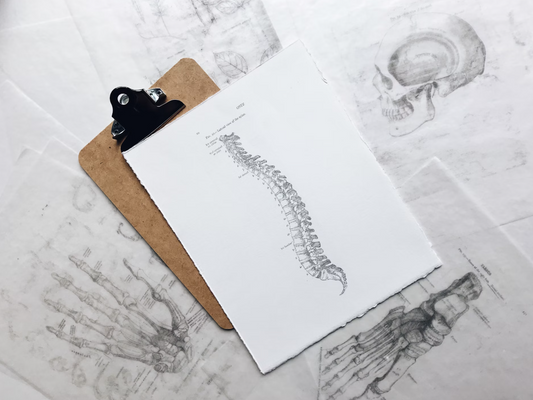Glossary: What is Sleep Apnea
Sleep apnea is a common yet often undiagnosed sleep disorder that affects millions of people worldwide. This article aims to provide a comprehensive understanding of sleep apnea, covering its definition, types, symptoms, risk factors, complications, diagnosis, treatment options, prevention strategies, and tips for living with the condition. By the end of this guide, you should have a clearer picture of what sleep apnea is and how it can be managed effectively.
Understanding Sleep Apnea
Definition and Basic Overview
Sleep apnea is characterized by repeated interruptions in breathing during sleep. These pauses can last for a few seconds to minutes and may occur multiple times per hour. As a result, individuals with sleep apnea often experience fragmented sleep and low oxygen levels in the blood. This disorder can lead to various health complications if left untreated.
The condition is primarily identified in three forms: obstructive sleep apnea (OSA), central sleep apnea (CSA), and complex sleep apnea syndrome. Understanding the nuances of each type is crucial for effective diagnosis and treatment. OSA is the most prevalent form, often linked to obesity, age, and anatomical factors such as the size of the neck or jaw. CSA, while less common, can be particularly concerning as it may indicate serious underlying health issues. Complex sleep apnea syndrome, as the name suggests, is a combination of both OSA and CSA, making its management more challenging.
The Science Behind Sleep Apnea
The science of sleep apnea is rooted in the understanding of sleep cycles and respiratory function. During sleep, particularly in the deeper stages, the muscles in the throat relax. In people with OSA, this relaxation can lead to a blockage of the upper airway, causing the individual to momentarily stop breathing, which often triggers a brief awakening. This cycle of disruption can significantly affect the quality of sleep, leading to excessive daytime sleepiness and a host of cognitive impairments.
Central sleep apnea, on the other hand, occurs when the brain fails to send appropriate signals to the muscles that control breathing. This type is less common and is often associated with underlying medical conditions, such as heart failure or stroke. Understanding these mechanisms can provide insights into how sleep apnea develops and the best treatment approaches. Furthermore, the impact of sleep apnea extends beyond just sleep quality; it has been linked to increased risks of hypertension, cardiovascular disease, and even diabetes. Recognizing the symptoms early, such as loud snoring, gasping for air during sleep, or chronic fatigue, can be pivotal in seeking timely medical intervention and improving overall health outcomes.
Types of Sleep Apnea
Obstructive Sleep Apnea
Obstructive sleep apnea is the most prevalent form of this disorder. It occurs when the throat muscles become overly relaxed during sleep, leading to an obstruction of the airway. This condition is often associated with risk factors such as obesity, a large neck circumference, and anatomical abnormalities in the mouth and throat.
Symptoms of OSA include loud snoring, episodes of gasping for air during sleep, and excessive daytime sleepiness. Many people may be unaware of their condition until a bed partner observes these troubling symptoms. Additionally, untreated OSA can lead to serious health complications, including cardiovascular issues, high blood pressure, and increased risk of stroke. The impact of OSA extends beyond physical health; it can also affect mental well-being, leading to mood swings, irritability, and difficulty concentrating, which can further disrupt daily life.
Central Sleep Apnea
Central sleep apnea is a less common form and differs significantly from OSA. In this type, there is no physical blockage of the airway. Instead, the brain fails to send proper signals to the muscles responsible for breathing. This can result in periods of no breathing, known as apneas.
This type often occurs in individuals with underlying health issues such as heart disease or neurological conditions. The lack of airflow leads to reduced oxygen supply, which may require intervention to restore normal breathing patterns. Patients with central sleep apnea may experience symptoms like difficulty staying asleep, frequent awakenings, and a feeling of choking or gasping during the night. Treatment options may include adaptive servo-ventilation (ASV) or bilevel positive airway pressure (BiPAP) therapy, which are designed to support breathing during sleep and improve overall sleep quality.
Complex Sleep Apnea Syndrome
Complex sleep apnea syndrome, also known as treatment-emergent central sleep apnea, is a combination of both obstructive and central sleep apnea. Individuals diagnosed with OSA may experience central sleep apnea when undergoing treatment, such as continuous positive airway pressure (CPAP) therapy.
This dual nature adds complexity to diagnosis and treatment, making it essential for healthcare professionals to carefully monitor and adjust therapy based on the patient's response. Patients may find that their symptoms fluctuate, necessitating ongoing evaluation and potentially a multi-faceted treatment approach. In some cases, lifestyle modifications, such as weight loss, positional therapy, and avoiding alcohol or sedatives before bedtime, can also play a crucial role in managing symptoms and improving sleep quality. Understanding the nuances of complex sleep apnea is vital for effective treatment and maintaining overall health, as it underscores the importance of personalized care in sleep medicine.
Symptoms and Warning Signs
Common Symptoms in Adults
Adults with sleep apnea may present various symptoms, including chronic fatigue, headaches, difficulty concentrating, and irritability. One of the hallmark symptoms is loud snoring, often accompanied by episodes of choking or gasping during sleep. These interruptions can lead to fragmented sleep, preventing individuals from reaching the deeper, restorative stages of sleep that are crucial for overall health.
Daytime sleepiness can severely impact one's quality of life and productivity, leading to a greater risk of accidents and impaired decision-making. In fact, studies have shown that individuals with untreated sleep apnea are more likely to experience workplace accidents and motor vehicle collisions due to their impaired alertness. Furthermore, the long-term effects of sleep apnea can extend beyond immediate symptoms, potentially contributing to serious health issues such as cardiovascular disease, diabetes, and hypertension.
Signs in Children
Sleep apnea is not limited to adults; it can also affect children. Common signs in young ones may include disrupted sleep patterns, bedwetting, hyperactivity, and difficulties in concentrating at school. Parents might notice their child displaying unusual behavior, such as excessive daytime sleepiness or irritability, which can often be mistaken for typical childhood behavior. Additionally, children with sleep apnea may experience growth delays or poor academic performance, as the lack of quality sleep can hinder their cognitive development.
Pediatric sleep apnea can lead to behavioral issues and impacts growth, making early detection and intervention essential for a child's well-being. It is crucial for parents to monitor their child's sleep habits and seek medical advice if they suspect sleep apnea. Treatment options may vary, ranging from lifestyle changes and weight management to the use of continuous positive airway pressure (CPAP) devices, which can significantly improve sleep quality and overall health in affected children.
Risk Factors and Causes
Lifestyle and Health Factors
Certain lifestyle choices can increase the risk of developing sleep apnea. Obesity is one of the most significant risk factors, as excess weight can contribute to airway obstruction. Other lifestyle factors include smoking, alcohol consumption, and sedative use, which may relax the throat muscles and exacerbate the condition. Engaging in regular physical activity can help mitigate some of these risks, as maintaining a healthy weight and improving muscle tone around the neck can reduce the likelihood of airway collapse during sleep.
Additionally, individuals with a family history of sleep apnea may be more predisposed to developing the disorder themselves. This hereditary aspect highlights the importance of awareness and proactive measures for those with relatives affected by sleep apnea. Furthermore, poor sleep hygiene, such as irregular sleep schedules and excessive screen time before bed, can also contribute to the severity of sleep apnea symptoms, making it essential for individuals to cultivate healthy sleep habits.
Genetic and Biological Factors
Genetic and biological influences also play a pivotal role in sleep apnea. Some anatomical features—such as a thick neck, enlarged tonsils, or a deviated septum—can make one more susceptible to obstructive sleep apnea. Hormonal factors and the specific architecture of an individual’s airway may also contribute to the likelihood of experiencing sleep apnea episodes. Research has shown that certain genetic markers may be linked to the development of sleep apnea, indicating a biological predisposition that warrants further investigation.
These factors, coupled with lifestyle choices, create a complex picture that healthcare providers must navigate when diagnosing and treating the condition. Moreover, the interaction between these biological predispositions and environmental triggers, such as allergens or respiratory infections, can exacerbate symptoms, leading to a cycle that is difficult to break. Understanding this interplay is crucial for developing effective treatment plans that address both the underlying causes and the contributing lifestyle factors, ultimately improving patient outcomes.
Complications of Sleep Apnea
Health Risks
If left untreated, sleep apnea can lead to serious health complications. These include cardiovascular issues like high blood pressure, heart disease, and stroke. The lack of restorative sleep can also contribute to insulin resistance and an increased risk of diabetes. Recent studies have shown that individuals with sleep apnea are at a higher risk for developing arrhythmias, which can lead to further complications such as heart failure. This connection underscores the importance of early diagnosis and intervention.
Moreover, untreated sleep apnea often correlates with mood disorders, anxiety, and depression, further impacting overall health and quality of life. The cyclical nature of sleep disturbances and mental health issues can create a challenging environment for those affected, making it difficult to break the pattern without professional help. Additionally, cognitive impairments such as memory loss and difficulty in decision-making are frequently reported, which can hinder personal and professional growth.
Impact on Daily Life
Beyond physical health, sleep apnea can significantly affect daily functioning. Many individuals report decreased productivity, low energy levels, and challenges in maintaining focus during tasks. This can lead to a vicious cycle where poor performance at work or school exacerbates feelings of inadequacy and frustration. The emotional toll can also lead to strained relationships and diminished overall well-being. Family members may find it challenging to understand the fatigue and irritability that accompany the condition, often leading to feelings of isolation for the person suffering from sleep apnea.
Addressing sleep apnea is not just a medical priority; it is essential for enhancing quality of life and fostering healthy relationships. Treatment options, ranging from lifestyle changes to the use of CPAP machines, can significantly improve sleep quality and, consequently, overall health. Support groups and counseling can also play a vital role in helping individuals cope with the emotional aspects of the condition, providing a platform for sharing experiences and strategies for managing the challenges that arise from sleep apnea.
Diagnosis and Tests
Medical History and Physical Examination
Diagnosis of sleep apnea typically begins with a thorough medical history and physical examination. Healthcare providers will ask about sleep patterns, symptoms, and any contributing factors, including lifestyle choices and medical conditions.

They may also assess the patient’s neck circumference and oral cavity to identify anatomical issues that could affect airflow during sleep. Additionally, they might inquire about the patient's family history of sleep disorders, as genetics can play a significant role in the predisposition to conditions like sleep apnea. Understanding the patient's daily habits, such as alcohol consumption and smoking, can also provide critical insights, as these factors can exacerbate the severity of the condition.
Sleep Studies and Other Tests
To confirm a diagnosis, patients may undergo a sleep study, also known as polysomnography. This test is usually performed in a specialized sleep center, where various physiological parameters are monitored throughout the night. These measurements can include brain activity, oxygen levels, heart rate, and breathing patterns. During the study, patients are typically connected to sensors that track their movements and respiratory events, providing a comprehensive overview of their sleep architecture.
In some cases, at-home sleep tests may be recommended for convenience, allowing patients to monitor their sleep in a familiar environment. These tests often involve simpler equipment that measures airflow, oxygen saturation, and heart rate, making them a more accessible option for many individuals. However, while at-home tests can be useful, they may not capture the full spectrum of sleep disturbances, which is why a formal sleep study remains the gold standard for diagnosis. Furthermore, the results from these tests can guide treatment options, ranging from lifestyle modifications to the use of CPAP machines or other interventions tailored to the patient's specific needs.
Treatment Options
Lifestyle Changes and Home Remedies
For mild cases of sleep apnea, lifestyle changes may be sufficient to alleviate symptoms. Simple modifications, such as losing weight, avoiding alcohol, quitting smoking, and sleeping on one’s side, can lead to significant improvements. Incorporating regular physical activity into one’s daily routine can also play a crucial role in enhancing overall sleep quality. Exercise not only helps with weight management but also promotes better respiratory function, which is essential for those suffering from sleep apnea.
Additionally, maintaining a regular sleep schedule can enhance sleep quality and reduce episodes of apnea. Establishing a calming bedtime routine, such as reading or practicing relaxation techniques, can further improve sleep onset and duration. Some individuals may find that using a humidifier in their bedroom alleviates throat irritation and dryness, which can be common among sleep apnea sufferers. Herbal teas, such as chamomile or valerian root, may also provide a soothing effect, helping to prepare the body for a restful night’s sleep.
Medical Treatments and Devices
In moderate to severe cases, medical treatments may be necessary. Continuous positive airway pressure (CPAP) machines are commonly prescribed, providing a steady stream of air to keep the airway open during sleep. Patients often benefit from personalized fittings and adjustments to ensure maximum comfort and effectiveness, as many find it challenging to adapt to wearing a mask while sleeping. Ongoing follow-up appointments are essential to monitor progress and make necessary modifications to the treatment plan.
Oral appliances may also be recommended, particularly for those with mild to moderate obstructive sleep apnea, helping to reposition the jaw and tongue to maintain clear airways. These devices are custom-made by dentists specializing in sleep medicine and can be a more comfortable alternative to CPAP machines for some patients. Regular dental check-ups are important to ensure the appliance fits correctly and does not cause any dental issues over time.
Surgical Procedures
When conservative treatments fail, surgical options may be considered. Procedures might include uvulopalatopharyngoplasty (UPPP), where excess tissue in the throat is removed, or more complex surgeries to restructure the jaw and improve airflow. Other surgical interventions may involve the implantation of a device that stimulates the hypoglossal nerve, which helps keep the airway open by preventing the tongue from collapsing backward during sleep. This innovative approach has shown promising results for many patients who have not found relief through other means.
These interventions are typically reserved for severe cases, and the decision to proceed is made after careful consideration of the individual’s specific needs and circumstances. Pre-operative assessments often include sleep studies and consultations with specialists to evaluate the potential benefits and risks associated with surgery. Post-operative care is equally important, as patients may need to adjust to new sleeping habits and follow specific guidelines to ensure optimal recovery and long-term success in managing their sleep apnea.
Prevention Strategies
Healthy Habits for Better Sleep
Preventing sleep apnea involves adopting healthy habits that promote restful sleep. This includes maintaining a healthy weight, engaging in regular physical activity, and creating a sleep-friendly environment that is dark, quiet, and cool.

Establishing a relaxing bedtime routine can also signal the body that it is time to wind down, ensuring better sleep hygiene.
Regular Check-ups and Monitoring
It is vital for individuals, particularly those at higher risk, to undergo regular health check-ups. Early identification and monitoring of sleep apnea symptoms can lead to more effective management and lower the risk of complications.
Staying informed about one’s health and vocalizing concerns during medical appointments can empower patients to advocate for necessary screening and intervention.
Living with Sleep Apnea
Tips for Managing Sleep Apnea
Managing sleep apnea may require an adjustment period, particularly if using devices like CPAP. Practicing good sleep hygiene and incorporating relaxation techniques, such as mindfulness or breathing exercises, can help enhance compliance and improve sleep quality.
Joining support groups or online communities can also provide valuable resources, tips, and encouragement from fellow individuals navigating their sleep apnea journey.
Support and Resources
Living with sleep apnea can feel overwhelming, but numerous resources are available for support. Healthcare professionals specializing in sleep medicine can provide guidance tailored to individual needs. Additionally, organizations like the American Academy of Sleep Medicine offer educational materials and connections to support networks.
By leveraging these resources, individuals can better understand and manage their condition, ultimately leading to a healthier, more restful night’s sleep.
If you're seeking to take control of your sleep apnea and breathe easier every day, Alveo is here to support your journey. With the world's first Continuous Respiratory Wearable, you can gain valuable insights into your breath patterns, understand environmental influences on your breathing, and enjoy personalized routines tailored to your lung capacity. Experience the lightness and comfort of real-time respiratory monitoring and alerts, and empower yourself with the knowledge to improve your sleep quality. Don't wait to transform your sleep health. Sign up on our waiting list today and be among the first to experience the benefits of Alveo's innovative technology.




